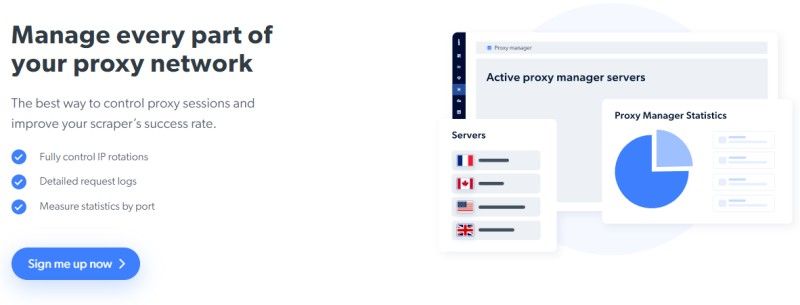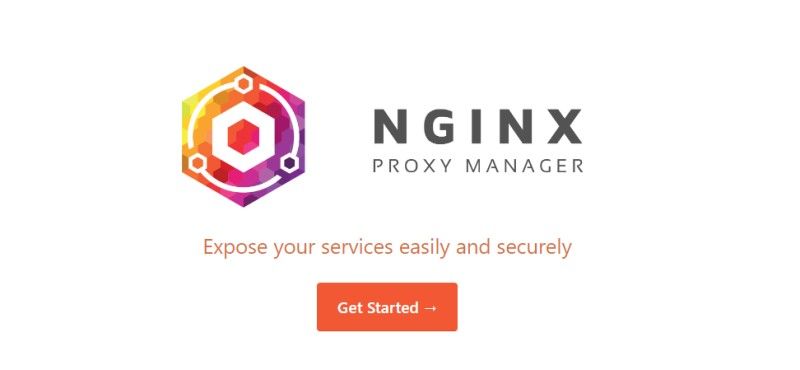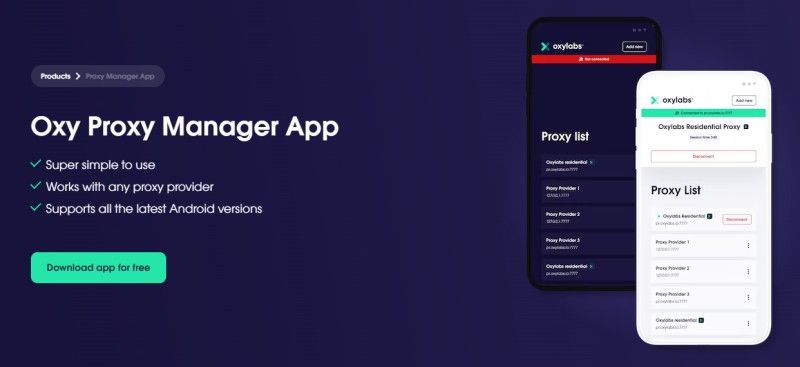In today's interconnected digital landscape, where data privacy and online security are paramount, proxy management has become an indispensable tool. Whether you're a business owner, developer, or an individual concerned about safeguarding your online activities, understanding and implementing effective proxy management strategies is crucial. This comprehensive guide will take you through the world of proxy management, from its definition and importance to choosing the best proxy solution for your project.
You can also check out our comprehensive guide on proxies and proxy servers.
Understanding Proxy Management
At its core, proxy management involves efficiently handling, utilizing, and administrating proxy servers. But what exactly is a proxy manager? A proxy manager is an invaluable ally in the proxy management process, overseeing and optimizing proxy server performance. They facilitate seamless communication between clients and servers, acting as intermediaries to ensure secure and efficient data transfer. The key functions of a proxy manager include routing requests, managing connections, handling authentication, and implementing caching mechanisms.
Why do you need a proxy manager?
Proxy managers play a vital role in enhancing both performance and security. By intelligently routing requests, they reduce latency and improve response times, resulting in a smooth and seamless experience. Moreover, proxy managers act as a shield against cyber threats, safeguarding your network and data by providing additional protection. Their ability to manage authentication processes ensures that only authorized users gain access to your resources, fortifying your online defenses. With the variety of proxy manager applications available, you can confidently navigate the digital realm, reaping the benefits of enhanced performance and reinforced security.
Types of Proxy Managers
Different types of proxy managers exist, each offering unique advantages and considerations. These proxy management options cater to diverse needs and provide varying levels of control and customization. Let's delve into three main categories of proxy managers:
• Built by Developers, for Developers. Developers often create proxy managers tailored to their specific needs. This approach allows for complete control and customization, enabling developers to fine-tune proxy management according to their project's requirements. While this offers unparalleled flexibility, it requires significant technical expertise and time investment.
• In-House Proxy Infrastructure. Organizations with substantial resources may opt for an in-house proxy infrastructure. This involves building and maintaining proxy servers within the organization's network. In-house solutions provide high control and security, but they can be costly to set up and maintain.
• Off-the-Shelf Proxy Management Solutions. Off-the-shelf proxy management solutions are pre-built platforms that offer a comprehensive suite of features. These solutions are designed to cater to a wide range of users, from individuals to enterprises. Off-the-shelf solutions balance customization and ease of use, making them an ideal choice for many organizations.
Using Proxy Managers
Now that you understand the different types of proxy managers, let's talk about how to use them effectively. Using a proxy manager involves a series of steps to ensure seamless integration and optimized performance.
• Configuration and Setup: Begin by configuring the proxy manager according to the specific requirements of your project. This includes specifying proxy server settings, authentication methods, and routing rules. Proper configuration ensures that the proxy manager aligns with your desired outcomes.
• Integration with Applications: Integrate the proxy manager with your applications or systems that require proxy support. This typically involves modifying network settings or application code to route traffic through the proxy server managed by the proxy manager. By integrating seamlessly, you can leverage the proxy manager's power to enhance your applications' functionality and security.
• Testing and Optimization: Once the integration is complete, thoroughly test the proxy manager to ensure its smooth operation. Monitor performance metrics, such as response times and throughput, to identify any bottlenecks or areas for improvement. Then, optimize the proxy manager settings, such as caching mechanisms and load balancing, to achieve the best possible performance.
Top Proxy Management Tools in the Industry
In the ever-expanding landscape of proxy management, numerous tools have emerged to simplify and enhance the management process. These tools come equipped with a wide range of features and benefits, catering to the diverse needs of users. Let's explore some popular proxy management tools that have proven their effectiveness in the field:
1. Bright Data's Proxy Manager offers a robust proxy pool with millions of IP addresses worldwide. In addition, it provides advanced proxy rotation capabilities, a user-friendly dashboard for easy configuration, and integration with popular web browsers and automation frameworks. Extensive documentation and reliable customer support are also available.

2. Nginx Proxy Manager is built on the powerful Nginx web server and reverse proxy, known for its high performance. It offers a user-friendly interface, streamlines the configuration and management of Nginx as a proxy server, and supports load balancing and caching mechanisms. Extensive community support and documentation further enhance its usability.

3. IPRoyal Proxy Manager provides a diverse and constantly updated proxy pool focusing on high-quality residential proxies. Its user-friendly dashboard allows for intuitive management of proxy configurations and offers in-depth analytics and reporting features for monitoring usage. Support for IP whitelisting and authentication methods ensures secure access control.

4. Zyte Smart Proxy Manager offers intelligent proxy rotation capabilities, a comprehensive dashboard and analytics, and a flexible API for seamless experience and integration with various applications and systems. It also boasts advanced session management and user authentication features, along with a high-quality proxy pool.

5. Oxylabs Proxy Manager provides a vast proxy network with residential and datacenter proxies. It emphasizes security through IP whitelisting and user authentication and offers customizable proxy rotation options and advanced targeting capabilities. Responsive customer support and extensive documentation round out its features.

When evaluating proxy management tools, consider factors such as scalability, reliability, ease of use, compatibility with your existing infrastructure, and the specific requirements of your project. By selecting the right tool that aligns with your needs, you can optimize your proxy management process and unlock the full potential of proxy technology.
Ensuring a Healthy and Secure Proxy Management
Proxy administration is a vital component of effective proxy management, as it encompasses the tasks required to maintain a robust and secure proxy infrastructure. By implementing proper proxy administration practices, you can optimize your proxy environment's performance, reliability, and security. Here are the key aspects of its administration:
• Configuration Management: Regularly review and update the configuration of proxy servers and proxy managers to adapt to changing requirements or security considerations. This includes modifying routing rules, adding new proxy hosts, and adjusting security settings.
• Performance Monitoring: Monitor the performance of proxy servers and proxy managers to identify any bottlenecks or performance issues. Use monitoring tools to track key metrics such as response times, throughput, and resource utilization. Promptly address any performance issues to ensure optimal proxy operation.
• Security and Access Control: Implement robust security practices to safeguard your proxy infrastructure. This includes configuring authentication mechanisms, implementing access control policies, and regularly patching and updating proxy software to protect against known vulnerabilities.
• Administrative Control in Proxy Management: Administrative control is essential to manage a proxy infrastructure effectively. It involves assigning appropriate roles and access permissions to individuals or teams responsible for proxy administration. By defining access levels and responsibilities, you can ensure only authorized personnel can change the proxy infrastructure. Administrative control minimizes the risk of unauthorized access or configuration changes that could compromise the security or performance of the proxy environment.
Monitoring Proxy Usage
Effective monitoring of proxy usage is a vital aspect of efficient proxy management. By closely tracking resource utilization, identifying potential misuse or abuse, and optimizing proxy performance, administrators can ensure the smooth operation of the proxy infrastructure. Let's explore some techniques and tools for effective monitoring in proxy management:
• Traffic Analysis: Analyze network traffic passing through the proxy to gain insights into usage patterns and identify trends and potential issues. Traffic analysis tools such as Wireshark or Elasticsearch can help capture and analyze network packets to understand the data flow through the proxy.
• Proxy Logs: Enable logging in the proxy server to record detailed information about requests, responses, and errors. Proxy logs can provide valuable information for troubleshooting, performance analysis, and security audits. Tools like Logstash or Splunk can assist in aggregating and analyzing proxy logs efficiently.
• Performance Monitoring: Utilize monitoring tools to track key performance metrics of the proxy infrastructure, including response times, latency, throughput, and resource utilization. This allows you to identify performance bottlenecks and make informed decisions for optimization. Tools like Prometheus or Nagios offer robust monitoring capabilities for proxy environments.
• Real-Time Alerts: Configure alerting mechanisms to receive real-time notifications when specific events or conditions occur. This enables proactive monitoring and prompt response to any critical issues or anomalies, ensuring the smooth operation of the proxy infrastructure. Alerting tools like Grafana or Zabbix can assist in setting up customized alerting rules.
Importance of Proxy Authentication in Proxy Management
Proxy authentication is crucial in ensuring secure and controlled access to proxy resources. Here are some key reasons why proxy authentication is essential in proxy management:
• Access Control: Proxy authentication allows organizations to enforce access control policies, ensuring only authorized users can utilize proxy resources. Organizations can prevent unauthorized access and protect sensitive data by implementing strong authentication methods.
• User Accountability: Proxy authentication enables organizations to track and log user activities, associating specific actions with individual users. This enhances accountability and facilitates forensic analysis in case of security incidents or policy violations.
• Security Enhancement: By authenticating users, proxy authentication adds an extra layer of security to the proxy infrastructure. It prevents unauthorized individuals from exploiting proxy resources, mitigates the risk of data breaches, and helps maintain the integrity and confidentiality of sensitive information.
Proxy Management Security Practices
Proxy management requires diligent adherence to security best practices to protect against potential threats and vulnerabilities. Here are some key security practices to consider:
• Regular Updates and Patching: Keep proxy servers and proxy management tools up to date with the latest security patches and updates. Regularly check for vulnerabilities and apply patches promptly to prevent potential exploits.
• Strong Authentication: Implement robust authentication methods, such as digest or token-based authentication, to ensure that only authorized users can access proxy resources. Avoid relying solely on basic authentication, which transmits credentials in plain text.
• Secure Communication: Utilize secure protocols, such as HTTPS, for communication between clients, proxies, and backend servers. Encrypting data in transit adds an extra layer of protection against eavesdropping and data interception.
• Access Control Policies: Define granular access control policies that align with your organization's security requirements. Regularly review and update these policies to reflect user roles, privileges, and organizational structure changes.
• Monitoring and Auditing: Implement robust monitoring and auditing mechanisms to track proxy usage, detect suspicious activities, and investigate potential security incidents. Review logs and security events regularly to identify anomalies or signs of unauthorized access.
• User Education and Awareness: Conduct training sessions and awareness programs to educate users about proxy security best practices. Promote strong password hygiene, caution against phishing attacks, and emphasize the importance of following security protocols.
Troubleshooting Common Proxy Issues
Despite diligent configuration and monitoring, proxy issues can occasionally arise within the proxy management process. Understanding and addressing these common issues promptly is essential to maintain optimal performance and functionality. Here are some frequently encountered proxy issues and techniques to troubleshoot them effectively:
• Connection Failures: If clients cannot connect to the proxy server, check network configurations and firewall settings, and ensure that the server runs correctly. Verify that the proxy server's listening ports are accessible and not blocked by any firewall rules.
• Slow Performance: Slow response times can be caused by various factors, such as high network latency, overloaded proxy servers, or misconfigured caching. Analyze performance metrics, review caching configurations, and optimize resource allocation to improve proxy performance.
• Authentication Errors: If users encounter authentication errors when accessing proxy resources, verify the correctness of authentication credentials, ensure that the authentication backend is functioning correctly, and check if any access control rules are causing conflicts.
Final words
Proxy management empowers businesses, developers, and individuals to confidently navigate the digital realm, enabling seamless communication, enhancing performance, and fortifying security. Embrace the power of proxy management and unlock a world of possibilities in the ever-expanding digital landscape.
Remember, proxy management is not a one-size-fits-all solution. Evaluate your unique requirements, explore different proxy managers and tools, and choose the solution that best aligns with your project goals. With effective proxy management in place, you can elevate your online experience, safeguard your data, and unlock new opportunities for growth and success.
Embrace the power of proxy management and embark on a journey towards enhanced performance and strengthened security today. To find the best-performing proxies, check out Geonode and find the complete proxy solution just for you!








